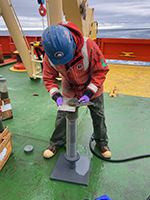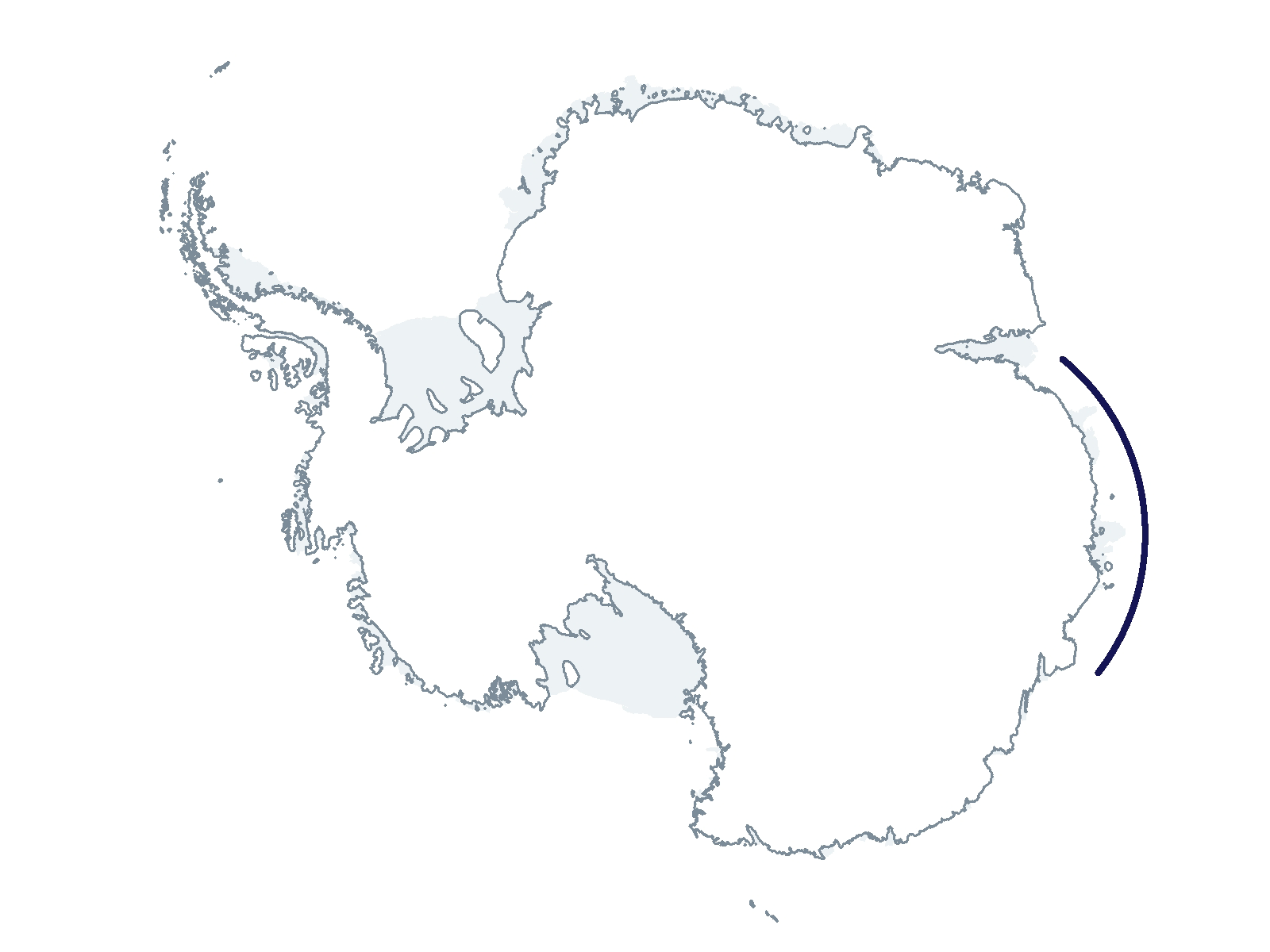2022-2023 USAP Field Season
Project Detail Project TitleCollaborative Research: Connecting metagenome potential to microbial function: Investigating microbial degradation of Complex Organic Matter Antarctic Benthic Sediments Summary
Event Number:
Program Director:
ASC POC/Implementer: Principal Investigator(s)
Dr. Deric R Learman
Location
Supporting Stations: RV/IB Nathaniel B. Palmer DescriptionThis program is designed to understand the intricate relationship between microbial communities and organic matter delivered to ocean floor ecosystem of Eastern Antarctica. Changing ice melting rates are altering the quality and availability of nutrient inputs which may be drastically affecting major biogeochemical cycles (such as carbon, nitrogen, and sulfur) in Antarctic and globally. Sediment samples will be collected from the continental shelf of Eastern Antarctica and will then be analyzed with advanced microbiology and geochemistry techniques to provide a detailed understanding of how sediment organic matter is degraded. The program will create short videos for education and outreach activities. Field Season OverviewThe team will join the RV/IB Nathaniel B. Palmer (NBP) expedition to sample benthic sediments in Eastern Antarctica - Prydz Bay with approximately 24 science days scheduled in collaboration with other projects studying adaptation and evolution of Life in Antarctica. For this project, a four-person crew will provide support to conduct this research, which will have a 24-hour operation schedule. Sampling needs are flexible, with benthic sediment samples requested to be collected with target depths ranging from 400-1000 m. The sampling needs of this proposal have been discussed with PIs in B-305-N (Halanych and Mahon) who have agreed to share sediment cores (from the mega/multicorer). If sediment cores are limited (due to the needs of all collaborators), then an additional six deployments are requested, with four mulitcores per sampling site. If available, water samples, collected from a CTD (conductivity, temperature, and depth) rosette with a standard sensor package (O2, salinity, Chl a, etc.), will be collected to provide natural seawater for microcosm experiments. Deploying Team Members
|
2022-2023 Science Planning Summary



For USAP Participants |
For The Public |
For Researchers and EducatorsContact UsU.S. National Science FoundationOffice of Polar Programs Geosciences Directorate 2415 Eisenhower Avenue, Suite W7100 Alexandria, VA 22314 Sign up for the NSF Office of Polar Programs newsletter and events. Feedback Form |



